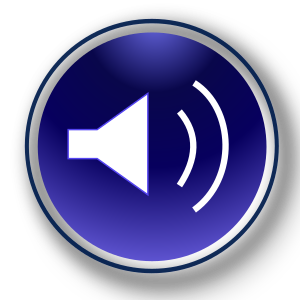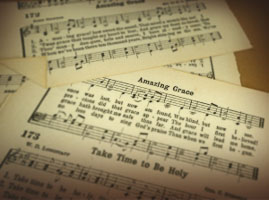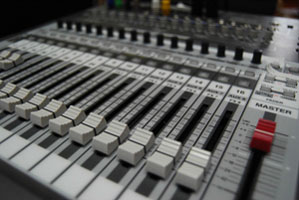
(this has been reposted with permission and was written by Bob Kauflan)
In the past few years, a number of voices have emerged encouraging church musicians to lose their music stands.
I don’t think anyone is saying it’s a matter “of first importance” to put the music stands away. But people have said if you really want to serve your church, you won’t use them.
Reasons to Strike the Stands
Here are some of the most common reasons people give for losing the stands.
- In many churches, a separation already exists due to a stage. Removing the stands removes the visible barrier.
- Musicians and vocalists tend to stare at their stands. When you remove them, musicians look up, look out, and are more engaged.
- Singing and playing without stands forces you to memorize music and communicates a higher standard of preparation and excellence. It’s unprofessional and uncaring to use them.
- If you’re nervous about forgetting lyrics, you can use a confidence monitor, i.e., project the lyrics on the back wall.
A Few Thoughts
While I appreciate and even applaud the impulses that lie behind church musicians going without music, it seems unwise to make it the rule or even the most-preferred practice.
We’re working with volunteers. Asking musicians to memorize the music each week assumes they’re full-time, specifically dedicated to that role in the church, or have enough time during the week to commit songs to memory. Those aren’t the kind of people I normally serve with at my church! While I appreciate musicians who know their music well, I’d rather have them free from anxiety when they’re leading.
We’re freer to make Sunday morning changes. Due to the limited amount of time our band rehearses, we come up with arrangements on Sunday mornings when we practice. That allows us to make last-minute changes, adjust arrangements to the musicians that are actually there, and make music rather than simply play it.
We want to sing the right songs. Memorizing all the songs tends to push us toward using shorter, more repetitive songs, or songs we’ve been singing for years. It doesn’t have to have that effect but often does. I shouldn’t determine the songs I lead on Sundays by how easy they are to memorize (think Psalm 119). God tells us the word of Christ is to dwell in us richly as we sing (Col. 3:16), and that implies at times I’ll lead songs that go beyond popular fare.
We want to identify the real causes. Singing with stands doesn’t communicate a lack of care, love, or engagement any more than a pastor using notes for his message does. It becomes a negative factor only when he reads mechanically, rarely looking up at the congregation. But I’d rather have him be sure of what he’s going to say than try to commit his message to memory and stumble along the way. And I’ve been ministered to in profound ways by both singers and preachers who have notes in front of them.
We sing in community. Finally, it’s participation, not performance, that should characterize our meetings. We’re singing with the congregation, not to or at them. Rather than being a barrier between us and the congregation, music stands can actually be a unifying element. They communicate we’re not musical professionals, that we can forget lyrics, and that we too can get distracted. Our congregations look at a screen (or a hymnal), but we’d never say they’re insincere or “unprepared” to worship God. Needy, imperfect, and dependent, we look to Jesus to perfect all our offerings of worship (1 Pet. 2:5). (HT to Allen Dicharry for this last insight)
Some Questions We Can Ask
If this is an issue at your church, these questions might help you reach some conclusions, whether that’s to go with stands or without them.
Are we allowing the use of music stands to be more of a focus than the God we’re worshiping and the people we’re singing with?
If so, get your head out of the stands. Go over the music in advance and use it simply as a reference. Develop the skill of looking at the line you’re about to sing, then looking up and singing it with the congregation. Try flattening out and lowering the stand, or moving it to the side, to reduce the physical barrier. Using music stands only separates you from the congregation when they’re a visual obstacle or you’re overly dependent on them.
Are we seeking to serve our congregation well?
Maximize whatever limited time you have to prepare. During rehearsals, sing and play as though there was a congregation in front of you. Sing to the empty seats. In a few days or in a few minutes, they’ll be filled with God’s people. If you do choose to go without stands and can afford it, consider adding a “confidence monitor,” lyrics projected either on the back wall or a television monitor. Besides helping the vocalists with the lyrics, a monitor also helps the leader know when the projectionist is putting the lyrics up.
What’s determining the kinds of songs we feed our church?
Take stock of what factors figure in to your song choices. We can consider ease of memorization, repetition, and simplicity, but they shouldn’t rule what we sing. God is too great and awesome, and our responses too deep and varied, to limit our songs of praise to what we’re able to memorize.
Which is more important to us: visibly engaging with a congregation or leading them to a deeper knowledge of God in Jesus Christ?
Those two ends aren’t necessarily opposed. When we lead a congregation to lift up their hearts and voices to praise God, it should be an emotionally engaging event. But emotions aren’t our focus – God’s glory in the face of Christ is (2 Cor. 4:6). God wants the real events of the gospel to move people, not the fact that they don’t have to look at us over music stands.
Like most secondary matters in congregational worship, using or not using music stands isn’t an either/or issue. We just want to make sure we’re asking the right questions.























